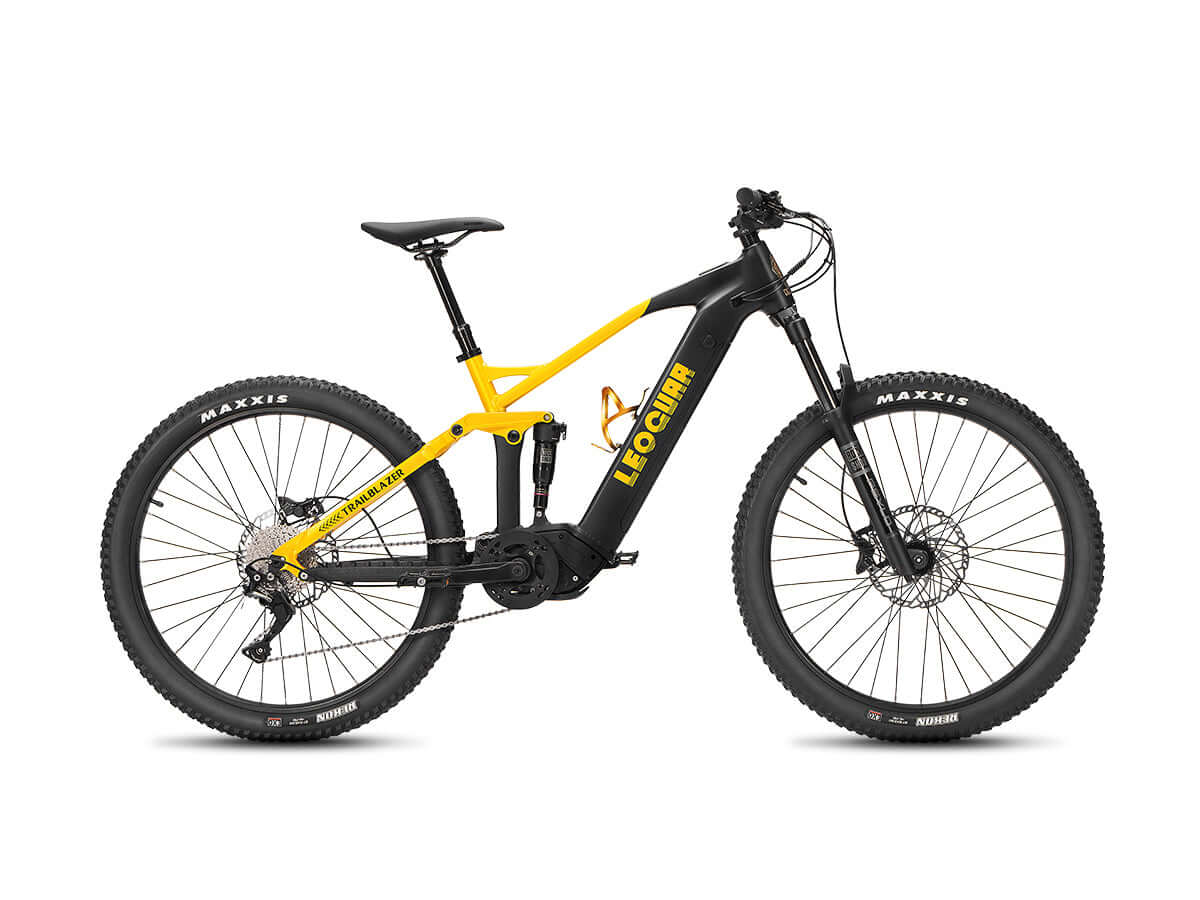
Bike Seat Post Prices 2025: Complete Guide From $15 to $150
What Your Money Buys You
A bike seat post looks simple, but prices range from $15 to $150. Shopping for one can confuse you. What do you get when you pay more money? The answer comes down to material, weight, how well you can adjust it, and comfort features. This guide will help you understand your choices and find the right balance of value and performance.
Here's what to expect at different price levels:
- Under $30: This is the basic tier. You get a heavy aluminum or steel post that works but weighs a lot and doesn't adjust precisely. It's good for simple repairs or casual riding.
- $30 - $75: This range offers the best value. You get a lighter aluminum post with a better two-bolt clamp that adjusts easily and stays secure. Most commuters and weekend riders should choose this level.
- $75 - $150: This is the performance tier. You'll find lightweight aluminum, carbon fiber that reduces vibration, and basic suspension seatposts that make your ride much more comfortable.
Three Critical Factors
Before you think about price or materials, you must get three things right. Getting these wrong means the bike seat post won't fit or could damage your bike frame. Always measure twice and buy once.
Seatpost Diameter
This measurement matters most. The outer diameter of the post must match the inner diameter of your bike frame seat tube exactly. You can usually find this size stamped on your old seatpost near the minimum insertion line. If you can't find it, a bike shop can measure it for you.
Using the wrong size causes serious problems. A post that's too small will slip and can crack your frame when you tighten the clamp too much. A post that's too large won't fit at all. The most common sizes on modern bikes are 27.2mm, 30.9mm, and 31.6mm, which cover most bikes. Getting this right keeps you safe and protects your frame, which experts always stress when choosing the right component for your bike.
Here are typical sizes by bike type:
| Bike Type | Common Diameters |
|---|---|
| Road Bike | 27.2mm |
| Mountain Bike | 30.9mm, 31.6mm |
| Hybrid/Commuter | 27.2mm (but varies widely) |
Seatpost Length
The length determines how high you can raise your saddle. You need enough length for proper leg extension while keeping the "minimum insertion line" inside the frame. If this line shows above the frame clamp, the post is too short and creates a dangerous stress point that can damage your frame. When replacing a post, measure your old one from bottom to the center of the saddle clamp. You can always buy the same length or slightly longer since you can insert it deeper into the frame.
Seatpost Setback
Setback means how far the saddle clamp sits behind the center of the post. A "zero-setback" post has the clamp directly on top, while a setback post moves the clamp back by 15-25mm. This affects how far you reach to the handlebars and your position over the pedals. Unless you're trying to fix a ebike fit problem, choose a new post with the same setback as your old one.

The Price Tiers Explained
Now that you know your required measurements, you can shop with confidence. Here's what you get at each price level.
| Price Range | Primary Material | Key Feature | Best For |
|---|---|---|---|
| Under $30 | Steel or Basic Aluminum | Basic Function | Casual riders, repairs |
| $30 - $75 | 6061/7075 Aluminum | Better Adjustability, Lighter | Enthusiasts, Commuters |
| $75 - $150 | Premium Aluminum, Entry Carbon, Basic Suspension | Performance, Comfort, Weight Savings | Serious riders, Comfort seekers |
The Entry-Level Tier: Under $30
At this price, you get basic function only. The bike seat post will be made of heavy steel or basic aluminum. Most posts here use a single-bolt clamp design. While these work, they can frustrate you because loosening the bolt adjusts both the saddle's front-to-back position and its angle at the same time, making precise adjustments hard.
- What you get: A heavy but working post that holds a saddle.
- The trade-offs: Lots of weight, clamps that don't adjust precisely and may slip, and basic finish that scratches easily.
- Who it's for: Getting an old bike working, replacing parts on kids' bikes, or cheap bikes where cost matters most.
The Value Sweet Spot: $30 - $75
Most riders will find the best mix of price, performance, and quality here. The upgrade at this level is big and noticeable. Materials usually jump to higher-grade 6061 or stronger 7075 aluminum, making a lighter and stronger post.
The most important upgrade is the clamp system. Posts in this range almost always have a two-bolt clamp. This design works much better because one bolt usually controls front-to-back position while the other controls saddle angle. This lets you make small, separate adjustments so you can get your fit perfect and trust it to stay put.
- What you get: A lighter, stronger aluminum post with a secure, easy-to-adjust two-bolt clamp and better finish.
- The trade-offs: While excellent, these aren't the lightest options available.
- Who it's for: Daily commuters, weekend riders, club cyclists, and anyone wanting a reliable upgrade that genuinely improves over a basic seatpost.
The Performance Upgrade: $75 - $150
Once you spend more than $75, you pay for real performance or comfort gains. Here you have three main choices:
- High-Grade Aluminum: These posts use advanced manufacturing like CNC machining and varying wall thickness to cut every possible gram without losing strength. They're for riders focused on lightweight efficiency.
- Entry-Level Carbon Fiber: Carbon fiber's main benefit is reducing high-frequency vibrations, which means a noticeably smoother ride and less fatigue on long rides. While not always lighter than top aluminum posts at this price, the comfort gain is the main selling point. Warning: carbon parts need a torque wrench for installation to prevent cracking.
- Entry-Level Suspension: This category includes basic suspension seatposts that actively absorb shocks. We'll explore this option more next.
- What you get: A choice between low weight (premium aluminum), vibration damping (carbon), or active suspension.
- The trade-offs: Higher price, and carbon needs more careful handling.
- Who it's for: Riders wanting to optimize their bike for a specific purpose, whether that's losing weight for climbing, increasing comfort for long rides, or smoothing out bumpy commutes.

The Suspension Dilemma
In the $100-$150 price range, you face a clear choice: a high-quality, lightweight rigid post or an entry-level suspension seatpost. A suspension seatpost has an internal spring or rubber mechanism that lets the post move up and down to absorb bumps from the road or trail.
This choice is a classic battle between simplicity and comfort. While this guide focuses on budget options, it's worth noting that high-end dedicated suspension seatposts can transform ride comfort, proving the technology works. For your budget, the decision comes down to your main need.
Showdown: $120 Performance Aluminum Post vs. $120 Suspension Seatpost
| Feature | High-Quality Aluminum Post | Entry-Level Suspension Post |
|---|---|---|
| Primary Benefit | Lightweight, stiff, efficient power transfer | Shock absorption, increased comfort |
| Weight | Lighter | Heavier, more complex |
| Maintenance | Virtually none | Requires periodic cleaning/service |
| Best For | Road riding, performance MTB, weight-conscious riders | Commuting, gravel, e-bikes, riders with back pain |
| Potential Downsides | Harsher ride feel | Can feel "bouncy," adds weight |
A lightweight aluminum or carbon post gives you a direct, connected feel to the bike. Power transfer happens instantly, which is perfect for spirited riding, racing, and climbing. The downside is that you feel more road buzz and impacts.
A suspension seatpost focuses on isolating you from those impacts. It's a great solution for riders on rough city streets, gravel paths, or those with back sensitivity. The trade-offs are added weight and complexity. These posts have moving parts that need occasional cleaning to prevent sticking, and some riders dislike the slight "bobbing" feeling when pedaling, which can feel less efficient.
Making Your Final Choice
With all this information, selecting the right bike seat post is straightforward. Just follow this simple four-step checklist to find the perfect option for you.
-
Confirm Your Fit: We can't stress this enough. Before you buy, double-check your required diameter and length. This is the foundation of your purchase. No feature matters if the post doesn't fit your frame.
-
Define Your Primary Use: Be honest with yourself. Is this for a 15-minute commute on paved roads, a 4-hour weekend group ride, or exploring bumpy gravel paths? Your main activity will point you toward the right price tier and features.
-
Set Your Realistic Budget: Look at the price tiers in this guide. Which one matches your needs and wallet? You don't need to overspend if a reliable $50 aluminum post with a two-bolt clamp will serve you perfectly for years.
-
Prioritize Your "One Thing": If you're still undecided, ask yourself what single improvement you want most. Is it rock-bottom price, low weight, maximum comfort, or easy adjustability? This one question often makes the final decision clear. For example, if comfort matters most, a suspension seatpost is the obvious choice over a lightweight aluminum one.
From our experience, the answer often depends on the terrain. We've found that for long commutes on bumpy city streets, the comfort from an entry-level suspension seatpost often outweighs the extra weight. However, for weekend group rides where speed and efficiency matter more, a lightweight, rigid aluminum post is the better tool for the job.
The Right Post Fits Your Ride
Choosing a new bike seat post doesn't have to be complicated. The process is simple: start with the required measurements of diameter and length, understand what features your budget can buy, then make a clear decision based on what you value most—weight, comfort, or cost.
Remember, the "best" seatpost isn't the most expensive one on the shelf. It's the one that correctly fits your bike, your body, and your riding style. A well-chosen post is a smart investment that can make every ride more comfortable, efficient, and enjoyable.
Frequently Asked Questions
1. Q: How do I know what diameter seatpost I need?
A: Check the stamped numbers on your current seatpost near the minimum insertion line. If you can't find them, take your bike to a shop or use digital calipers to measure the inner diameter of your seat tube. The most common sizes are 27.2mm, 30.9mm, and 31.6mm.
2. Q: Can I use a seatpost that's slightly smaller than my seat tube?
A: No, never use a smaller diameter post. It will slip down even when tightened and can crack your frame from over-tightening the clamp. Always use the exact diameter that matches your frame.
3. Q: Is carbon fiber worth the extra cost for a seatpost?
A: Carbon fiber's main benefit is vibration damping, which creates a smoother, more comfortable ride. If you do long rides or have back sensitivity, the comfort gain can be worth it. However, if you prioritize low cost or maximum durability, aluminum is the better choice.
4. Q: How much should I spend on a seatpost for commuting?
A: For most commuters, the $30-$75 range offers the best value. You'll get a reliable aluminum post with a good two-bolt clamp that adjusts easily and stays secure. If your commute involves rough roads, consider spending up to $150 for a suspension seatpost.
5. Q: Do suspension seatposts require special maintenance?
A: Yes, suspension seatposts have moving parts that need occasional cleaning to prevent dirt buildup and sticking. Clean them every few months and follow the manufacturer's service recommendations. Rigid posts require virtually no maintenance beyond normal cleaning.







































Leave a comment